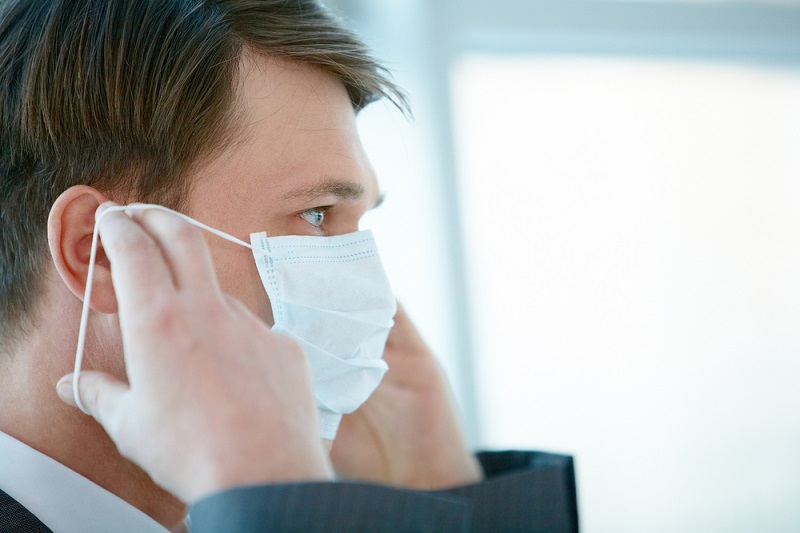Stand Back, Way Back: Flu Virus Can Be Spread Just by Breathing

Simply standing back when someone coughs or sneezes won't necessarily protect you from the flu — you also need to keep your distance when a sick person merely breathes. That's because the virus can be spread just by breathing, a new study confirms.
In the study, the scientists found large quantities of infectious flu virus in the exhaled breath of people with the disease, highlighting the importance of "airborne" transmission in flu spread.
"The study findings suggest that keeping surfaces clean, washing our hands all the time and avoiding people who are coughing does not provide complete protection from getting the flu," study co-author Sheryl Ehrman, dean of the College of Engineering at San José State University, said in a statement. But staying home when you're sick "could make a difference in the spread of the influenza virus," Ehrman said.
Previously, many researchers thought that flu viruses spread mainly through "large particle" droplets that are produced when people cough or sneeze. Researchers also knew that flu viruses could travel through the air through smaller particles called aerosols, released when someone breathes. But exactly how much flu virus people "shed" by breathing, and whether these exhaled flu viruses were infectious, was unclear, the researchers said. [How Do You Die from the Flu?]
To examine this, the researchers enrolled 142 people who were confirmed to be sick with the flu in their study, and had the participants sit in a machine that could capture the flu viruses in their breath. The machine, called the "Gesundheit II human source bioaerosol sampler," consists of a large, cone-shaped device where participants place their head. Participants were asked to breathe, talk, cough and sneeze naturally during a 30-minute session in the machine.
The researchers found that coughing was not necessary for the sick participants to generate infectious aerosols. Of the 23 aerosol samples that were obtained without coughing, nearly half (48 percent) contained detectable levels of flu virus, and eight samples (about 35 percent) contained infectious virus.
"We found that [people with the] flu … contaminated the air around them with infectious virus just by breathing, without coughing or sneezing," lead study author Dr. Donald Milton, a professor of environmental health at the University of Maryland School of Public Health, said in the statement.
Get the world’s most fascinating discoveries delivered straight to your inbox.
People were more likely to generate these infectious aerosols during the first few days of their illness, Milton said. "So when someone is coming down with influenza, they should go home and not remain in the workplace and infect others," he said.
The study also found that participants didn't sneeze very often, and even when they did, their sneezes didn't generate a greater number of infectious particles than coughing did.
This suggests that "sneezing does not appear to make an important contribution to influenza virus shedding in aerosols," although it could play a role in spreading the virus through the contamination of surfaces, the researchers said.
The findings could be used to improve mathematical models of the risk of airborne flu transmission, the researchers said.
The study was published online Jan. 18 in the journal Proceedings of the National Academy of Sciences.
Original article on Live Science.

Rachael is a Live Science contributor, and was a former channel editor and senior writer for Live Science between 2010 and 2022. She has a master's degree in journalism from New York University's Science, Health and Environmental Reporting Program. She also holds a B.S. in molecular biology and an M.S. in biology from the University of California, San Diego. Her work has appeared in Scienceline, The Washington Post and Scientific American.
 Live Science Plus
Live Science Plus






